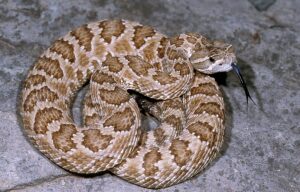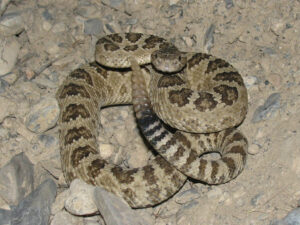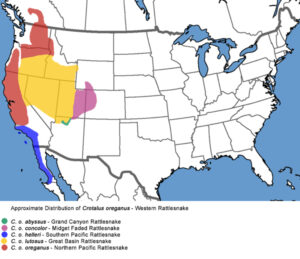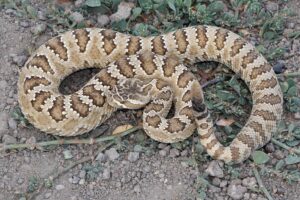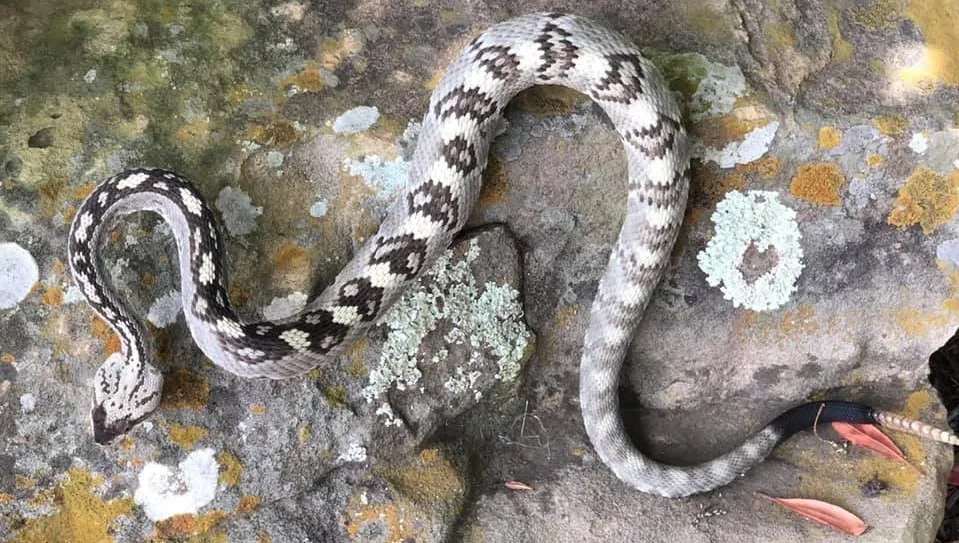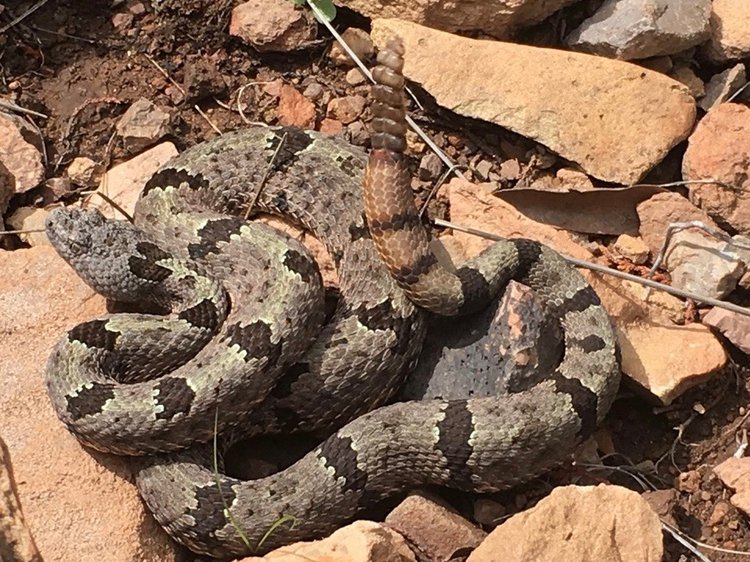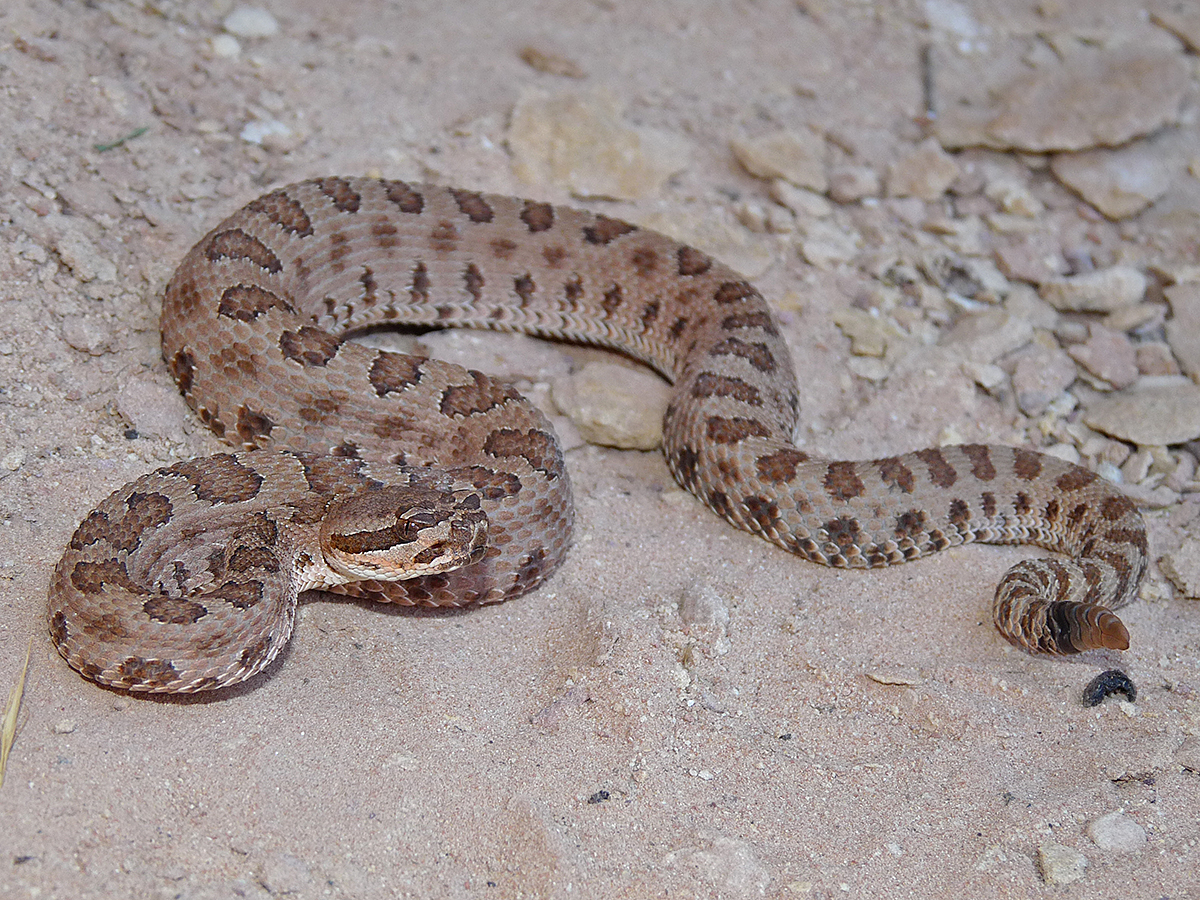The Great Basin rattlesnake is a venomous pit viper species found in the Great Basin region of the United States. The heavy-bodied snake has a large triangular head, a thin neck, and a rattle at the end of its tail created by loose interlocking hollow segments. It is primarily crepuscular and nocturnal during periods of excessive daytime heat but can be active during the day at moderate temperatures.
Conservation Status
Description
Size
The adults are 26-48 in (66-121 cm) long overall but rarely exceed 3ft 3 in (1 m). The males are larger than the females.
Color and Appearance
The ground color is buff, pale brown, pale gray, yellowish brown, or olive brown (hence the specific name ‘lutosus’ meaning ‘muddy’) overlaid with a series of 32-49 dorsal blotches. The irregular-shaped blotches vary in color from dark brown to black with pale centers and borders. They are more wide than long. A series of lateral blotches is also present, but it is not prominent in the front portion of the body. They are more prominent on the posterior side, eventually merging with the dorsal blotches to form crossbands. The pattern is faded in older snakes that may have uniformly black blotches with a black dorsum of the head.
A distinctive feature of the snake is the presence of 3 or more internasal scales. The pupils are elliptical, and the scales are keeled.
Are They Dangerous to Humans
The Great Basin rattlesnake is dangerous to humans as it has a venomous bite. But it first tries to get out of the way of an approaching threat. If it can’t escape, it tries to deter its predator by shaking its tail, making the characteristic rattle or buzzing sound. If all of this doesn’t work, the snake coils itself and prepares to strike. Their bites are seldom fatal but warrant prompt medical care.
Great Basin Rattlesnakes at a Glance
Distribution
Its range includes Utah west of long. 111° West, Idaho south of lat. 44° North, Arizona north and west of the Colorado River along with the north rim of the Grand Canyon, California east of the Sierra Nevada from Lower Klamath Lake south to below Lake Mono, the entire state of Nevada (excluding Clark, Nye and Esmeralda counties), Oregon east and south of the line Upper Klamath Lake–Fort Rock–Burns–Council (Idaho)
Habitat
It lives in the dry and barren areas of the Great Basin region – on old lake benches, hills, and summits with a preference for southern exposures among boulders and rocks on buttes and hillsides, mountainsides, low foothills, alfalfa fields, valley floors, and open deserts.
It is commonly encountered by hikers and on the roadsides at night, looking for food.
Lifespan
The Great Basin rattlesnake lives for around 17 years. The maximum recorded lifespan of the species is 19.5 years.
Predators
It is preyed upon by hawks and other raptors.
Diet
It feeds on reptiles, amphibians, bird eggs, birds, and mammals.
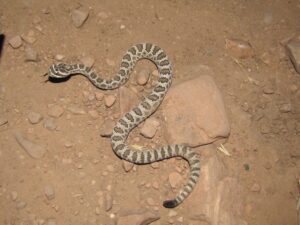
Reproduction
Ovoviviparous (gives birth to live young from eggs that hatch inside the body)
Mating occurs between March and May and sometimes in the fall. A brood contains 3-13 young with bright yellow tails and no rattles.
Source
1.bp.blogspot.com, snakebuddies.net, californiaherps.com, thehibbitts.net, flickr.com

